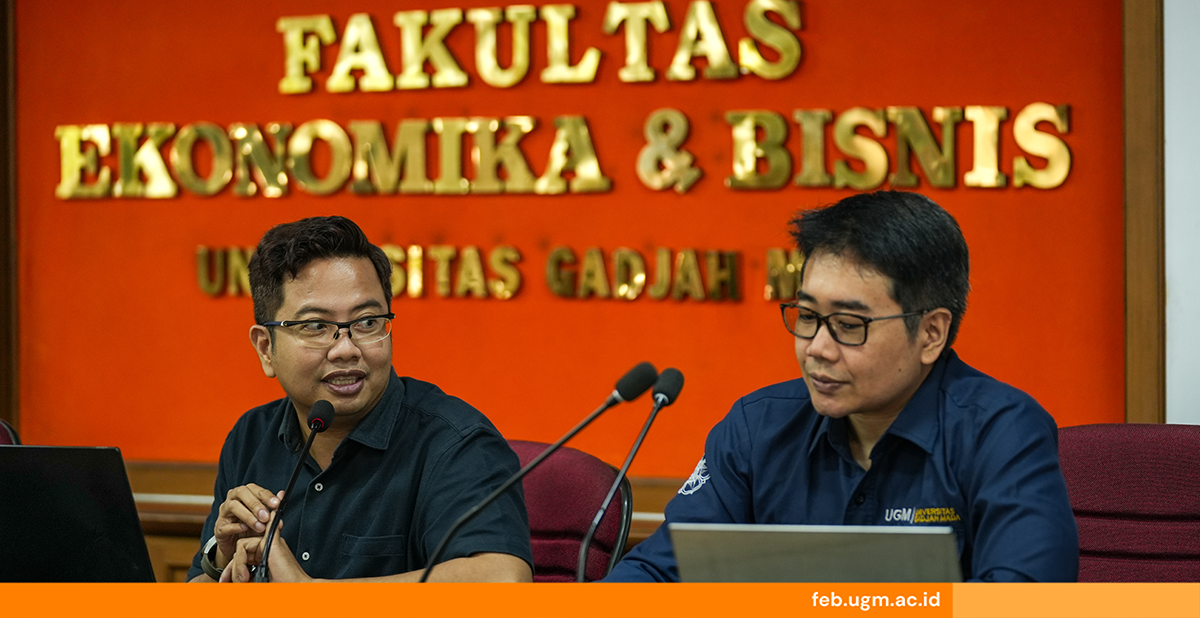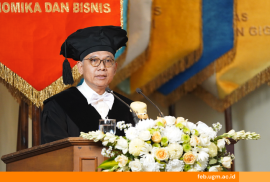
Artificial Intelligence (AI) is no longer taboo in this digital age. AI has become integral to various aspects of daily life, including education. While concerns about the ethics and impact of AI in education continue to arise, technological advances are inevitable. To assist educators in integrating AI into teaching and research, the Faculty of Economics and Business at Universitas Gadjah Mada (FEB UGM) organized a workshop titled “Workshop on AI Utilization,” which was held on Wednesday (5/2) at the Kertanegara Room.
An information technology expert from the Faculty of Engineering, UGM, Prof. Dr. Ir. Ridi Ferdiana, S.T., M.T., IPM., explained that we are now in the Generative Artificial Intelligence (GenAI) era. Technologies like ChatGPT and Deepseek allow users to quickly generate text, video, images, or audio with AI that works similarly to the human brain. This innovation significantly simplifies everyday tasks. However, privacy concerns have emerged alongside these conveniences, as free AI services often come at the cost of personal data.
AI can be applied to learning in a variety of ways. Some notable applications include a possibility engine that generates alternative ideas, a Socratic opponent that acts as a debate partner to encourage discussion, a collaboration coach that assists in problem-solving, and a guide on the side that serves as a learning mentor. Other implementations include a personal tutor that provides one-on-one tutoring, a co-designer that assists in design processes, an exploratorium that enables data exploration, a study buddy that helps students learn based on their level of understanding, a motivator that challenges learners in their studies, and a dynamic assessor that evaluates student progress.
Given the extensive use of AI in education, it is critical for AI users, especially educators, to understand how to communicate with AI for optimal results effectively. This approach, known as prompting, involves giving specific instructions to the AI to acquire new information or achieve particular goals.
Effective prompting follows a structured framework. Gunawan Wibisono, M.Acc., CA., CMA., a lecturer in the Department of Accounting at FEB UGM, outlined the key elements of effective prompting. First, users must define the task or goal to be achieved, specify the intended role or persona of the AI, determine the desired output format (text, video, image, etc.), and determine the expertise required for the output.
Second, users should provide detailed context or background information, including relevant time and place details, specify the preferred style or format of the output, and set boundaries to ensure that AI-generated content remains relevant.
Third, users must include references such as syllabus materials or previous assignments, provide relevant data or supporting information, structure the desired output, and incorporate external references such as journals, books, or databases.
Fourth, evaluation of the AI-generated output is essential. The evaluation includes checking for accuracy, relevance, structure, formatting, depth, and complexity. Users can manually evaluate the output or refine it with additional evaluation prompts.
Fifth, if the results are unsatisfactory, users can iterate or refine their prompts by rephrasing and using appropriate framing or analogies. Incorporating these elements into a single prompt helps generate more effective AI responses.
Interestingly, Gunawan also demonstrated that programming expertise is no longer a prerequisite for building AI agents. He showed how ChatGPT and well-crafted prompts can be used to develop AI agents to assist in grading assignments and tutoring students. However, he advised educators to avoid using free AI services due to privacy risks. As a more secure alternative, UGM offers free and secure AI services through Microsoft 365 UGM’s Copilot. In addition, Scopus AI can generate research ideas and literature reviews.
Ridi encouraged beginners to explore different AI tools and use them according to their specific needs, such as ChatGPT for text generation and DALL-E for image generation. He also emphasized the importance of learning prompting techniques based on the structured framework and recognizing that AI-generated content is not always accurate and requires human review.
Reportage: Najwah Ariella Puteri
Editor: Kurnia Ekaptiningrum
Sustainable Development Goals







